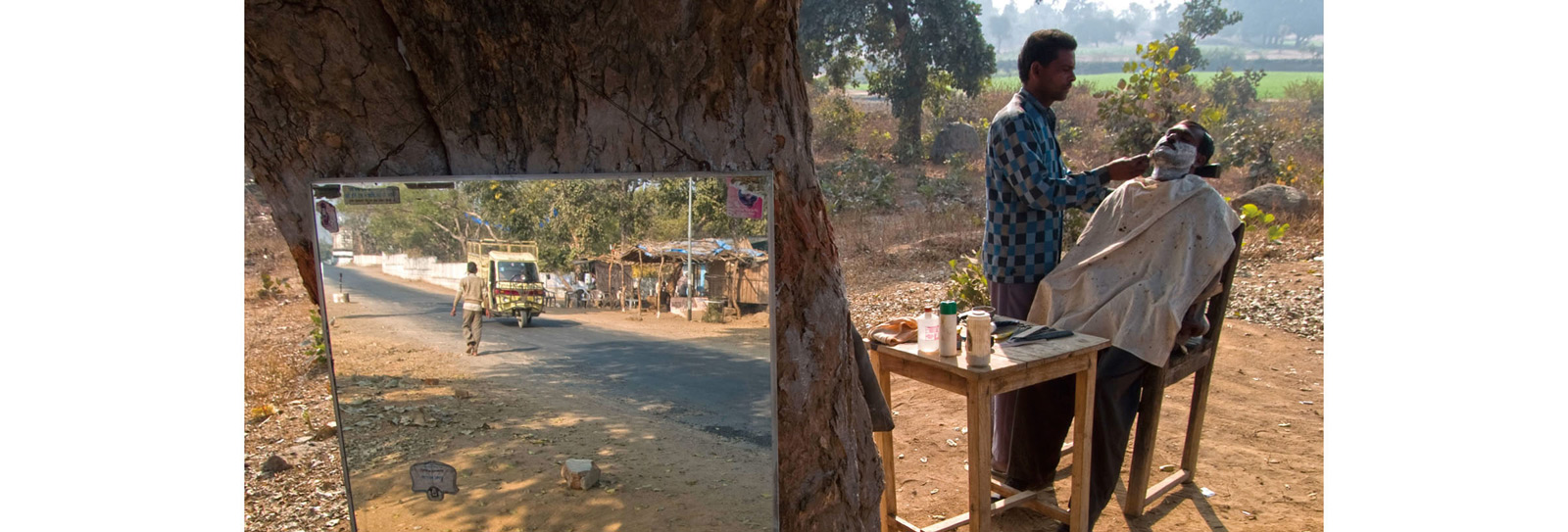
FirstLook: State Highway 37, near Orchha, Madhya Pradesh, Central India
- Arts
- Photography
Photograph by David H. Wells
Driving north out of the historic town of Orchha in the morning, I spotted a roadside tea shop and, near it, this barber who had hung a large mirror to a tree, facing the road. It was a common enough scene: Tens of thousands of independent, casual tea shops serve travelers on India’s highways and byways; outdoor barbers are less common, as they tend to work more often near marketplaces. As my wife and friends got tea, I stayed around chatting with the barber and his customer, showing them a few images on my camera, and then leaving them to their conversation and work. To make this image, I looked to the mirror for a secondary plane of activity, a kind of second narrative, to add depth and complexity. I took variations of this image from different positions, using different lens focal lengths as I tried to harmonize the primary and secondary scenes, looking for a moment when both the barber and the mirror offered elements that added to an overall narrative. For me, the mirror was not just a photographer’s challenge. It was also a way to suggest subtly that despite my many months spent all around India over the past two decades, both on assignment and visiting my in-laws’ family, I am forever looking from the outside in, working to distinguish one plane of experience and meaning from another.
You may also be interested in...

FirstLook: Ramadan’s Lanterns
Arts
In the March/April 1992 issue, writer and photographer John Feeney took AramcoWorld readers on a walk through the streets of Cairo during Ramadan.
FirstLook: "Arabs In America: Native Sons"
Arts
In 1975 AramcoWorld dedicated an entire issue to celebrating the lives of Arab Americans and their impact—from renowned heart surgeon Michael DeBakey to White House correspondent Helen Thomas to entertainer and St. Jude Children’s Research Hospital founder Danny Thomas.
FirstLook: Soaring off Ambon Island
Arts
This photo was taken off Ambon Island, East Indonesia in 2010. It is one of my favorites, illustrating the free-spirited nature of the children in the rural archipelago. While some children in the big cities may stay inside and play computer games, the children in Ambon with easy access to the water see the ocean surrounding their village as their playground.